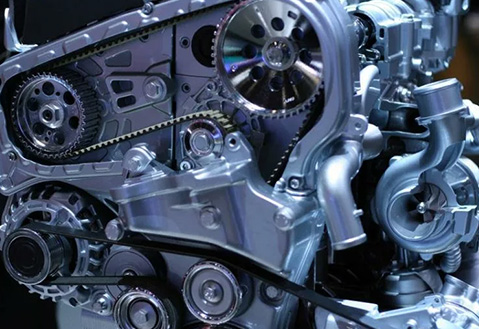- Arabic
- French
- Russian
- Spanish
- Portuguese
- Turkish
- Armenian
- English
- Albanian
- Amharic
- Azerbaijani
- Basque
- Belarusian
- Bengali
- Bosnian
- Bulgarian
- Catalan
- Cebuano
- Corsican
- Croatian
- Czech
- Danish
- Dutch
- Afrikaans
- Esperanto
- Estonian
- Finnish
- Frisian
- Galician
- Georgian
- German
- Greek
- Gujarati
- Haitian Creole
- hausa
- hawaiian
- Hebrew
- Hindi
- Miao
- Hungarian
- Icelandic
- igbo
- Indonesian
- irish
- Italian
- Japanese
- Javanese
- Kannada
- kazakh
- Khmer
- Rwandese
- Korean
- Kurdish
- Kyrgyz
- Lao
- Latin
- Latvian
- Lithuanian
- Luxembourgish
- Macedonian
- Malgashi
- Malay
- Malayalam
- Maltese
- Maori
- Marathi
- Mongolian
- Myanmar
- Nepali
- Norwegian
- Norwegian
- Occitan
- Pashto
- Persian
- Polish
- Punjabi
- Romanian
- Samoan
- Scottish Gaelic
- Serbian
- Sesotho
- Shona
- Sindhi
- Sinhala
- Slovak
- Slovenian
- Somali
- Sundanese
- Swahili
- Swedish
- Tagalog
- Tajik
- Tamil
- Tatar
- Telugu
- Thai
- Turkmen
- Ukrainian
- Urdu
- Uighur
- Uzbek
- Vietnamese
- Welsh
- Bantu
- Yiddish
- Yoruba
- Zulu
Desemba . 24, 2024 21:30 Back to list
Finding the Right Fan Belt for Your Vehicle's Needs
Understanding Fan Belts for Cars A Comprehensive Guide
The fan belt, also known as the serpentine belt or drive belt, is an essential component in a car's engine system. It plays a critical role in powering various accessories, including the cooling fan, alternator, water pump, and air conditioning compressor. Understanding the importance, functionality, and maintenance of your car's fan belt is vital for ensuring optimal vehicle performance and longevity.
What is a Fan Belt?
The fan belt is a long, rubberized belt that winds around multiple pulleys in your car's engine. In traditional setups, there would be multiple belts for different functions, but modern vehicles often utilize a single serpentine belt that efficiently drives multiple components at once. This design not only simplifies the engine's layout but also enhances the belt's durability and performance.
How the Fan Belt Works
The fan belt operates by utilizing the rotation of the engine's crankshaft. As the engine runs, the crankshaft spins, which, in turn, causes the fan belt to move across its pulleys. This movement drives the attached components. For example, when the belt rotates the alternator, it generates electrical power to charge the battery and run electrical systems in the vehicle. Similarly, it drives the water pump to circulate coolant through the engine, and the air conditioning compressor to provide climate control.
Signs of a Failing Fan Belt
Regular checks of the fan belt are crucial as it can wear out over time
. There are several signs indicating your fan belt may need attention1. Squeaking or Chirping Noises If you hear a high-pitched noise when starting your car or when using accessories like AC, it might be a sign of a loose or worn-out belt.
2. Cracks or Fraying Visually inspect the belt for any cracks, fraying, or other signs of damage. These indicators suggest that the belt is nearing the end of its lifespan.
fan belt for car

3. Overheating Engine If the cooling system isn’t functioning properly, it could be due to a fan belt that’s not effectively driving the water pump.
4. Battery Issues A failed fan belt can lead to the alternator not generating enough electricity, causing battery problems and electrical system failures.
Maintenance Tips
1. Regular Inspections At least once a month, inspect the fan belt for signs of wear and proper tension. Look for damages such as cracks, fraying, or shiny areas which indicate slipping.
2. Check Tension A belt that is too loose can slip off the pulleys, while one that is too tight can cause excessive wear on engine components. Most serpentine belts have tensioners that facilitate proper tension.
3. Replace as Needed Most fan belts need replacement every 60,000 to 100,000 miles, depending on the vehicle and driving conditions. Consult your owner's manual for specific guidelines.
4. Professional Help If you are uncertain about inspecting or replacing the fan belt, it’s best to consult a mechanic. Routine maintenance can prevent costly repairs down the road.
Conclusion
Understanding the function and maintenance of your car's fan belt is pivotal for optimal vehicle performance. Regular inspections and timely replacements are crucial in preventing failures that could lead to engine overheating or electrical malfunctions. A well-maintained fan belt not only extends the life of your vehicle but also ensures that all provided accessories function correctly, contributing to a smooth and reliable driving experience. By paying attention to this crucial component, you can enhance your car's efficiency and performance while minimizing the risk of breakdowns.
-
Korean Auto Parts Timing Belt 24312-37500 For Hyundai/Kia
NewsMar.07,2025
-
7PK2300 90916-T2024 RIBBED BELT POLY V BELT PK BELT
NewsMar.07,2025
-
Chinese Auto Belt Factory 310-2M-22 For BMW/Mercedes-Benz
NewsMar.07,2025
-
Chinese Auto Belt Factory 310-2M-22 For BMW/Mercedes-Benz
NewsMar.07,2025
-
90916-02660 PK Belt 6PK1680 For Toyota
NewsMar.07,2025
-
drive belt serpentine belt
NewsMar.07,2025

